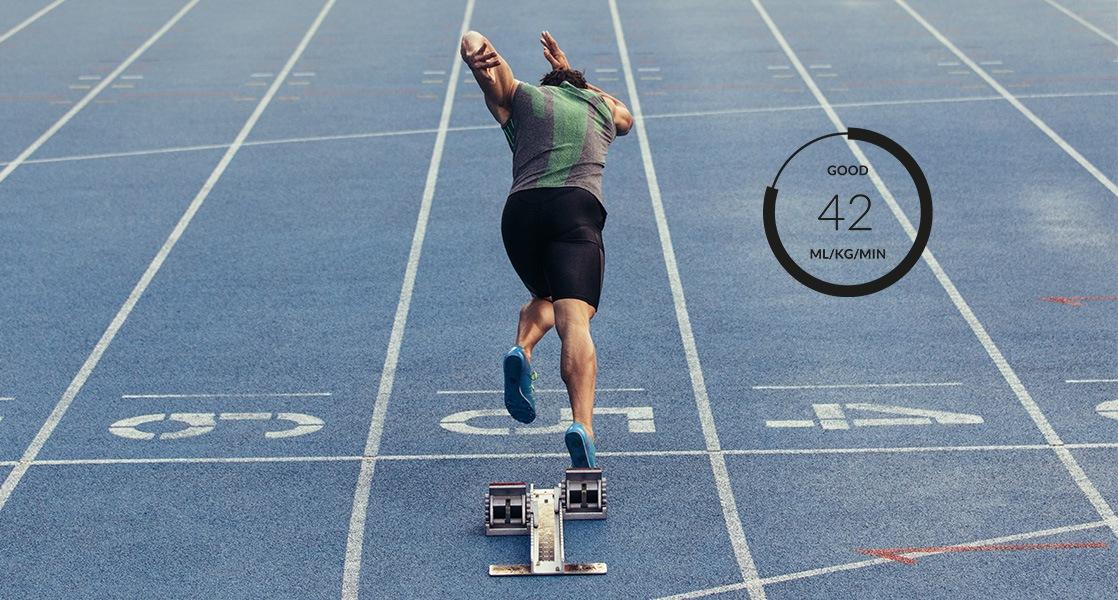
Nearly everyone wants to improve their fitness. Many wonder why their fitness isn’t improving as fast as they’d like. Cardiorespiratory fitness (CRF), or aerobic performance capacity, is measured in terms of VO2max. Research shows that increasing your VO2max offers many health and performance benefits.
A growing number of smartwatches, sport watches and fitness trackers can detect your VO2max fitness level during runs and walks. Monitoring changes in your VO2max helps assess the results of lifestyle choices and provides a clear path towards improved performance. It can also reveal when your progress stalls, a frustrating experience that may leave you asking questions. Why isn’t my VO2max increasing? What am I doing wrong? What should I be doing to improve my VO2max?
4+1 Tips for Increasing your VO2max or Improving Faster
This article explores four common reasons why your VO2max might not be increasing as quickly as you hoped and what you can do about it. It also takes a quick look at the role genetics play in your fitness and ability to improve.
Lack of High-intensity Efforts #1
Different kinds of efforts trigger different kinds of physiological adaptation. Low- and moderate-intensity workouts are important for overall health, building your endurance base, and strengthening your muscles. When it comes to improving your VO2max fitness level, it is primarily the high-intensity portions of your workouts that matter most. Hard efforts signal your physiological systems to adapt in ways that boost your ability to produce energy aerobically.
High-intensity Interval Training (HIIT) workouts are a popular and efficient method of incorporating high-intensity efforts into your training program. Interval training is a cornerstone of training programs at any level. Varying the intensity of workouts can be particularly helpful for people with lower fitness levels, provided you are healthy enough to perform them. This is because including lighter, recovery work between high-intensity efforts makes it possible to perform more of these efforts than would be otherwise possible.
Tempo runs are a common type of workout that endurance athletes use to trigger the development of additional aerobic performance capacity. These workouts typically involve running with an intensity of roughly 90% of VO2max for between 45-60 minutes.
You can always check the Aerobic Training Effect of any workout to discover how that specific session stimulated your development. This insight allows you to dial in your efforts to an appropriate level for you personally. A good rule-of-thumb method for improving VO2max is to challenge yourself 2-3 times per week with workouts that have an Aerobic Training Effect of 3.0-4.0.
Inadequate Recovery #2
Another common problem for those struggling to improve their VO2max is a lack of adequate recovery. Goal-oriented athletes are often eager to progress and achieve their goals as quickly as possible. This frequently leads to training longer and harder than you should, which can be ultimately counterproductive.
The physiological adaptations that enhance your future performance capacity can only take place during the recovery periods between challenging activities. Tackling the next hard challenge before recovering from the last one means missed opportunity. You are giving up on the full developmental benefit triggered by your earlier workout.
If you suspect that a lack of progress is the result of poor recovery, it’s always a good idea to keep an eye on your recovery time feedback to learn more about how long it takes you to bounce back from various types of workouts.
Lack of Variety in Your Efforts #3
Sometimes jump starting an increase in VO2max is as simple as changing up your training routines. High-intensity efforts are key to improving your VO2max, but over focusing on these tough workouts can lead to weaknesses in supporting systems. It’s important to build a strong foundation with different kinds of efforts. This is where tools like Training Load Balance (Load Focus) come in handy, revealing how your high- and low-intensity aerobic efforts and dynamic anaerobic efforts contribute to your overall training load.
It’s also important to include strength and flexibility training in your program.
Beyond the big picture, it’s good to change up the details of specific workouts from time to time. Keep your workouts fresh. Change the lengths of your longer runs, the durations and peak intensities of your intervals. Experiment with different cadences and tempos.
Highly Trained Athletes #4
As in most aspects of life, the law of diminishing returns applies to training and increasing performance capacity. Simply put, the fitter you are, the harder you must work to improve. Experienced endurance athletes, who have been training regularly and effectively for many years, are likely to be already near the peak of their personal aerobic performance capacity.
A plateau in VO2max is relatively familiar and common for those who have been training and competing in marathons for 5-6 years. And, although for some of these well-trained individuals, it may be possible to improve… the amount of additional time and effort required to squeeze that last drop extra potential performance out of themselves is beyond that level of commitment that most amateurs are able to make.
It isn’t realistic for anyone to maintain peak performance year-round. VO2max offers a key reference for being at your best when it matters most. With that in mind, trends in your VO2max and related insights like Training Status reveal how things are going from one week or month to the next.
Genetic Potential +1
Our genetics play a huge role in how our bodies grow. Genetics also guide how our physiology adapts in response to challenges of life and environment. Some people are naturally taller, and others are naturally stronger. Some people have natural advantages in their ability to fuel their performance aerobically.
These advantages can take the form of total capacity, but also appear in the form of responsiveness to training activities. In other words, not everyone improves at the same rate in response to similar training stimuli. It may just be a matter of time before you see the results you are working towards. You just need to keep challenging yourself regularly, recovering well, and getting enough sleep.
While not everyone has the same maximum potential, practically anyone can improve their VO2max to some degree. Everyone healthy enough to be physically active can work towards of achieving more health benefits and improved quality of life.
You might also be interested in

New Firstbeat Life ™ Solution is Here – “This Year has Shown that Employee Well-being is a Crucial Factor for Every Company.”
Press Release August 5, 2020 Firstbeat Technologies, the leading provider of well-being and sports technology, has today launched Firstbeat Life – the new subscription-based corporate wellness solution for modern workplace well-being management and an…

Firstbeat Technologies Renews Focus on Corporate Wellness and Sports as Firstbeat Licensing Business Is Acquired by Garmin
Press Release June 30, 2020 On June 30, 2020, Firstbeat Analytics Oy was acquired by Garmin Ltd. (NASDAQ:GRMN). Firstbeat Analytics Oy operates the consumer technologies licensing business that previously functioned…

